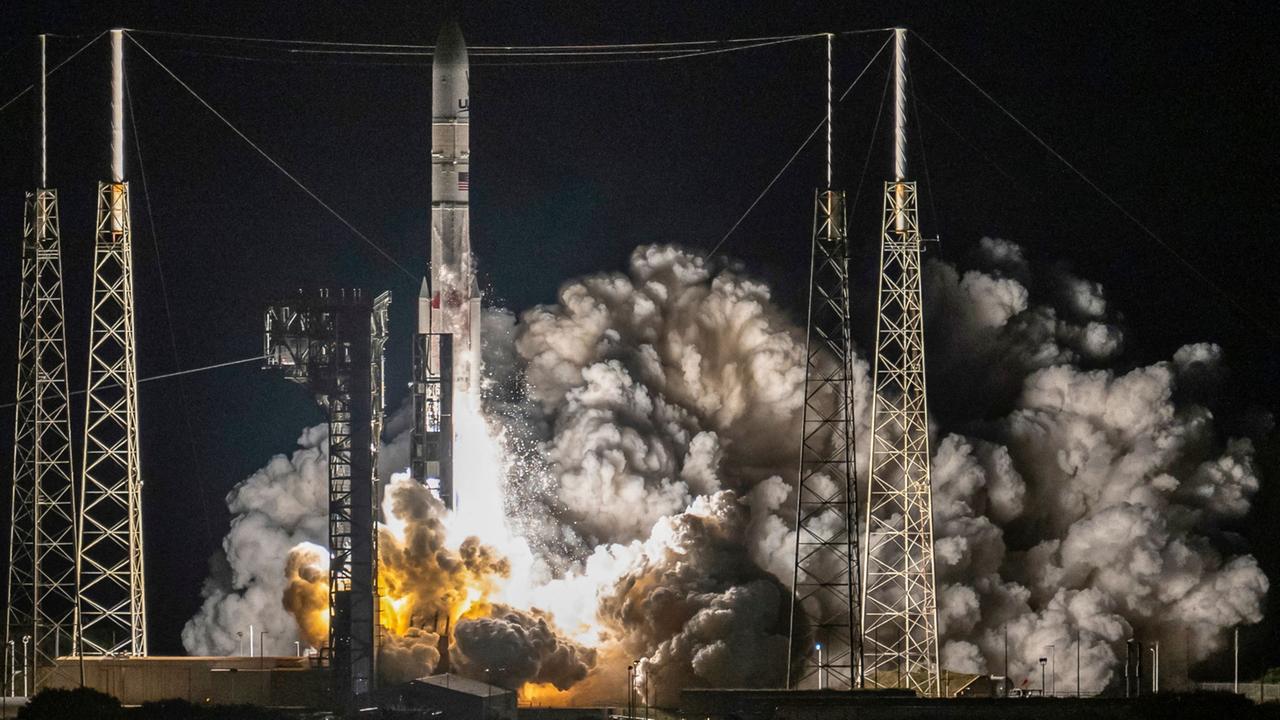A cargo flight to the moon has taken off from the US spaceport Cape Canaveral. The privately operated lander carries scientific equipment and commercial cargo from several countries.
The cargo flight to the moon is the first of several of its kind planned for 2024. The lunar lander required for this was financed by the American space agency NASA, but is a development and property of the private US space company Astrobotic. The lander carries scientific equipment, engineering experiments and commercial cargo from several countries. His name: Peregrine, German for “peregrine falcon”.
What is Peregrine exactly?
Peregrine is a type of truck for transport to the moon. People cannot be transported with this spacecraft, but scientific measuring instruments, technical equipment, robots or even objects that companies want to place on the moon for very different reasons and business interests.
The lunar lander is two meters high and 2.5 meters wide. Peregrine lands on four legs, slowed by rocket engines. These legs support a platform on which a total of 21 different “packages” are mounted.
But unlike the terrestrial parcel delivery company, the cargo items are not distributed after landing, but remain on board or are placed on the lunar surface in the immediate vicinity of the lander – small robots and rovers, for example.
Peregrine stays on the moon
Another difference to the freight forwarding truck: Peregrine is a disposable transporter. After landing, the device remains on the lunar surface and does not return to Earth. An Earth-Moon shuttle service is therefore not possible.
The development of the lander was financed by the American space agency NASA as part of the Commercial Lunar Payload Services – a funding program to develop commercial cargo transport to the moon.
In order to save fuel, Peregrine does not fly the shortest route to the Earth’s satellite, but instead spirals to such a great distance from the Earth that the lander ultimately comes into the moon’s gravitational pull. After more than six weeks of spiral flight in space, Peregrine is scheduled to land on the Earth-facing side of the moon on February 23rd.
The targeted landing area is very interesting for geologists because hills of silicate-rich lava have been rising there for billions of years – a material that only occurs in places on Earth; namely where continental plates meet and water is present.
Since the moon has neither, it is a great mystery how these hills could have formed there. Peregrine and a follow-up mission in 2026 should help solve this mystery.
What goes to the moon and why?
Whether governments or non-governmental organizations, universities or research institutes or even private individuals: In principle, anyone and everyone can have cargo brought to the moon with Astrobotic’s landers. And as different as the clients are, so is the content of the “moon packets”.
The first flight carries cargo from seven countries on board. These include Mexican mini-robots, each barely larger than a hand, which are supposed to roll as a swarm across the moon’s surface. Also capsules from a space funeral home containing the ashes of the deceased and metal plates from an archiving project inscribed in microscript with texts in 1,000 different languages of humanity.
A large German parcel delivery company contributes a box with all sorts of favorite items from its customers. German research is represented by a measuring instrument from the German Aerospace Center, which is intended to help prepare future lunar landings by measuring cosmic rays on the lunar surface.
What else is coming this year?
The year 2024 could be the year of unmanned moon landings. After Russia and Japan failed last year, while India became the fourth nation to succeed in landing on the moon, another Japanese landing attempt is now imminent.
The Japanese Space Agency’s SLIM lunar lander is scheduled to reach the lunar surface on January 19th. Additional American commercial lunar landers are expected to follow Peregrine’s example later this year.
The USA hopes to be able to give a boost to the economic use of the moon with regular cargo traffic between the moon and Earth, and NASA wants to prepare its Artemis 3 mission by dropping technology on the moon.
The plan is to land people on the moon for the first time in more than 50 years at the end of 2025 at the earliest – at the lunar south pole. There are places on high crater rims that are permanently exposed to sunlight and are therefore well suited for building a moon base.
However, the terrain at the moon’s south pole is very rugged, and the lunar shipping service is at risk of crash landings on slopes and boulders. When it lands in a relatively flat area in February, Peregrine is therefore testing a new type of sensor that will enable precision landings with an accuracy of 100 meters on subsequent cargo flights.
Uwe Gradwohl, SWR, tagesschau, January 7th, 2024 6:46 a.m




